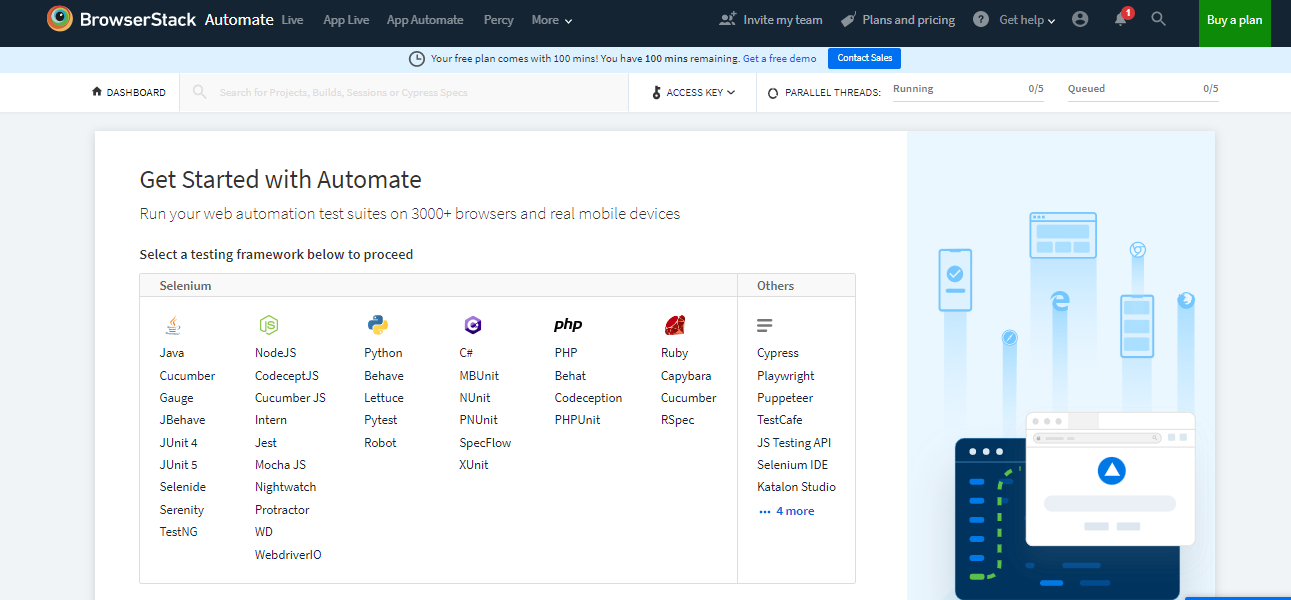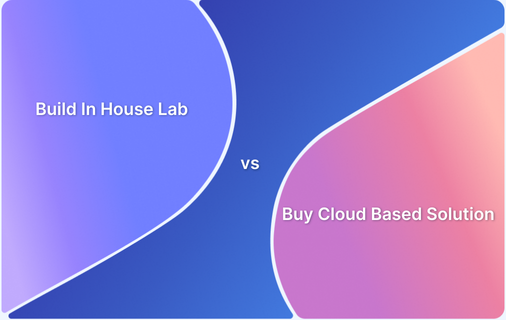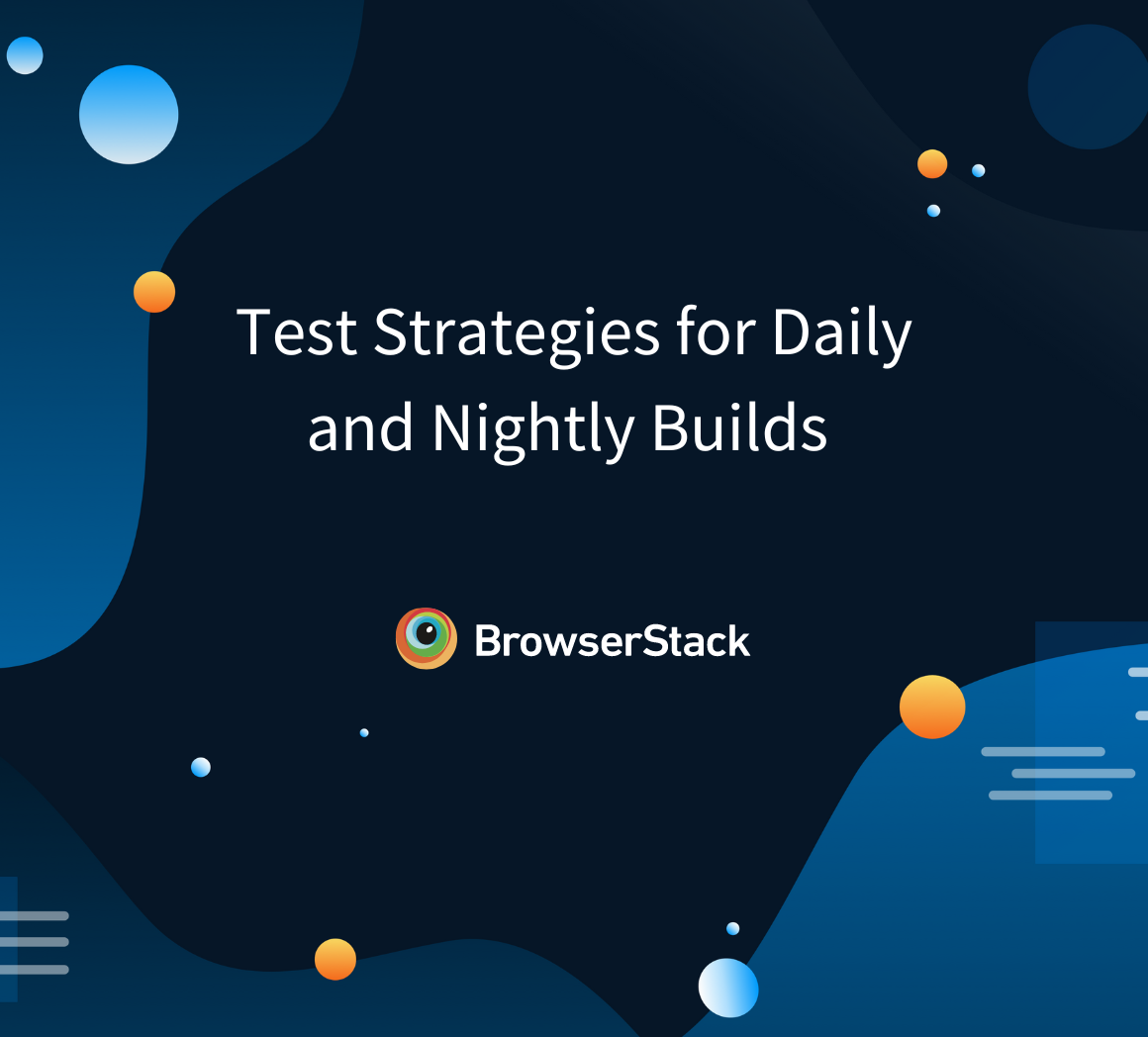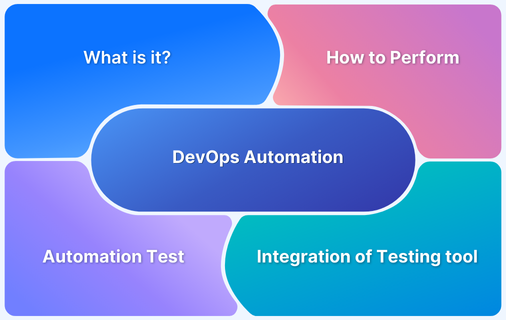Build Automation: Everything you Need to Know
By Shormistha Chatterjee, Community Contributor - December 5, 2024
Build automation is the process of automating tasks that transform human-readable source code into executable software. This includes code compilation, dependency resolution, packaging, and test execution.
By automating these repetitive tasks, build automation enhances productivity, reduces errors, and ensures consistency in the software development lifecycle.
Manual builds, though manageable for small projects, became error-prone and inefficient as project complexity grew. Build automation streamlined these processes, becoming essential for modern software development. This article explores its concepts, benefits, and tools.
What is Build Automation?
The Build is preparing and turning your source code into executable software. It can include compilation, file compression, the packaging of assets, updating database schema, creating an installer or executable file, signing with a certificate, testing, and more.
That said, Build automation is a sophisticated approach to controlling and managing builds within a CI/CD pipeline with multiple steps.
Key Metrics
- The Set of User Stories/ Features per Build- Indicates the number of modifications being executed and maps to business value being formed.
- Average Build Time- Specifies the average time to execute a build.
- Percentage of Failed Builds- Impacts the entire team’s productivity due to rework.
- Change Execution Lead Time- Affects the number of releases per period and complete product roadmap preparation.
- Builds Frequency – Point toward the overall activity and output of the project.
Importance of Build Automation
Build automation is crucial in modern software development, streamlining repetitive processes, enhancing collaboration, and ensuring reliable deployments. Here are the key reasons why build automation is indispensable:
Time-Saving
Build automation eliminates repetitive manual tasks like compiling, testing, and packaging code, allowing developers to focus on more strategic aspects of software development and speeding up the build cycle.
Consistency
Automated processes ensure every build follows a standardized procedure, reducing the risk of errors caused by manual intervention and maintaining uniformity across builds.
Faster Feedback
With build automation, developers receive instant feedback on code changes, enabling them to identify and fix issues before they escalate quickly.
Code Quality
Incorporating unit tests, integration tests, and other quality checks into the build process improves code quality by detecting bugs and regressions early.
Automated Deployments
Build automation integrates with deployment pipelines, facilitating faster, error-free software releases. Automated deployments ensure consistent results across environments.
Scalability
Manual processes need to be more efficient as projects and teams grow. Build automation scales quickly, adapting to projects’ increasing complexity and size without adding overhead.
Auditability and Documentation
Automated builds generate detailed records of the build process, including version control history, dependencies, and configurations. This audit trail is valuable for troubleshooting, replicating builds, or meeting compliance requirements.
Enhanced Collaboration
Automated builds create a standardized framework, ensuring all team members work with the same codebase and artifacts. This consistency fosters smoother collaboration across teams.
Resource Optimization
Build automation can schedule tasks during non-working hours, optimizing resource usage and minimizing disruptions to the development workflow.
Improved Time-to-Market
Build automation shortens development cycles by reducing errors, streamlining processes, and enabling faster feedback. This allows teams to deliver software more quickly.
Must Read: Benefits of Automation Testing
How does Build Automation work
The build automation process uses tools, scripts, and workflows to automate the tasks required to build and deploy software efficiently.
Below is an overview of the build automation workflow:
- Code Commit to Repository: Developers commit updated code to a Version Control System (VCS) like GitHub, GitLab, or Bitbucket. These platforms manage software updates and track code changes.
- CI Server Detects Changes: A Continuous Integration server monitors the repository for new commits. It updates its database and prepares for the next steps when changes are detected.
- Build Configuration Triggers Build Agent: A build configuration defines the build process, including triggers like new commits, scheduled times, or post-scan completions. When triggered, it activates build agents to execute tasks.
- Build Agents Activate Build Tools: Build agents, installed on dedicated servers, follow commands from the CI server. They coordinate tasks such as compiling code, generating installers, or compressing data using predefined configurations.
- Executing Build Tasks: Build tools like Maven, Gradle, or others handle tasks such as compiling code, running tests (e.g., unit tests), and compressing files. These tools are optimized for specific programming languages and automate the low-level work.
- Build Artifacts Sent to CI Server: If all stages pass, the build artifacts—executable files or binaries—are returned to the CI server. They may then be deployed, undergo further testing, or stored as part of the CI/CD pipeline.
Also Read: How to Setup an Effective CI/CD Pipeline
Key Components of a Build Automation System
A Build Automation system streamlines the development process by automating key tasks.
Here are its essential components:
- Track code changes and trigger builds using tools like Git or SVN.
- Define build steps with scripts created in Maven, Gradle, or Bash.
- Automate build processes with CI tools like Jenkins or Travis CI.
- Execute builds across environments using build agents for scalability.
- Ensure code quality with testing frameworks like JUnit or Pytest.
- Store build outputs in artifact repositories for easy access and deployment.
- Get real-time build status updates through notification systems.
- Automate artifact delivery to production using tools like Docker or Ansible.
How to Automate the Build Process?
Quality assurance to Quality engineering and Testing are significant parts of the Software Development Life Cycle. Testing tools integrated into source code as a section of the build, such as JUnit or tests can be externally called against the app, e.g. performance test tools like JMeter or Gatling. Tests can paint an extensive brush, and there is loads of coverage between the source code and the running app.
Here is how to Automate the Build Procedure:
- Write the code.
- Commit code to a shared, central repository.
- Scan the code utilizing tools.
- Start a source code review.
- Accumulate code & files.
- Run test automation.
- Notify contributors to mitigate issues.
Role of CI in the Automated Build Process
The automated build process allows CI (Continuous Integration). So, the role of CI in the build automation process is that CI uses build automation to verify check-ins and allow teams to identify issues early.
Due to its relationship with CI, build automation also makes CT (Continuous Testing) and CD (Continuous Delivery) possible.
What is Continuous Integration?
The term ‘CI’ (Continuous Integration) defines the modification that has been integrated constantly within a system. In this procedure, the system can integrate those modifications automatically using the source code in the production and generate binaries with the aid of current changes. Here, you must know that automation testing and building will confirm each integration within the system.
- Developers can also get CI (continuous integration) service with the Cloud.
- The cloud infrastructure will allow the developers to track and configure several software deployment and development procedures phases.
- Through the cloud, software developers can automate such steps and save time and effort.
You can rely on testing with 3500+ real browsers and devices on BrowserStack’s real device cloud. Automated tests in the CI/CD pipeline tested on real browsers and devices is a real boon for the developers.
Popular Build Automation Tools
1. Jenkins: Jenkins is one of the open-source build automation tools for Java, offering CI and CD. With around 200,000 known installations it is the most broadly deployed tool. Jenkins comprises a wealth of extensions for customization. It has huge community support, and several plugins are accessible to integrate it with other tools like GitHub, Slack, and Docker. Besides, anybody can develop a Jenkins plugin & contribute to it.
Features:
- Highly configurable
- Many plugins
- Version control
- Works with Maven, Ant, scripts, etc.
Automate Testing for your Jenkins Pipeline
2. CircleCI: CircleCI is a CI platform that aims for speed and broad flexibility, promising to work with any language that builds on Linux, Windows, or Mac. Its YAML configuration can take time, yet it offers benefits over tools like Jenkins, allowing you to keep tasks in an individual document.
To run tests on real gadgets, you can add integrations for BrowserStack in the config.yml file. It supports famous test automation frameworks like Playwright, Cypress, Selenium, and Puppeteer.
Features:
- Automation testing
- Failure notifications
- Advanced caching options
Read More: Circle CI vs Jenkins: Core Differences
3. Travis CI: Travis CI is a CI tool with a free plan that aims for simplicity. It covers over 700,000 users and is a perfect choice for a straight configuration. Its presets enable rapid configuration, but it doesn’t have several plugins or configuration choices as tools like Jenkins. Its clean builds execute from a fresh environment every single time, avoiding awkward glitches that can be tough to diagnose and fix.
Features:
- Multiplatform
- Pull request testing
- Supports over 30 languages
- Clean build VMs
- Connects to Bitbucket and GitHub
4. Apache Maven: Apache Maven is open-source and free. It is the famous and well-accepted build automation tool in Java. It can manage a series of tasks and is simple for coders to configure and set up owing to its straightforward documentation.
Features:
- Highly extensible
- Reproducible builds
- Strong dependency management
- Release management
- Model-based builds, requiring slight input to set up
Also Read: Maven Dependency Management with Selenium
5. TeamCity: TeamCity is a build automation tool with several versions from JetBrains pitched at DevOps-centric teams. It has over 30,000 clientele and integrates well with numerous other tools, including JetBrains’ own ReSharper and IntelliJ IDEA, which are bundled.
Features:
- CI (continuous integration) & code reuse
- Incorporates with other tools such as Docker and Maven, as well as various cloud services
- User & build history management
Choosing/Integrating the Right Build Automation Tool
Before choosing an automation tool everybody has to go through the following easy steps:
- Step 1: Collect all the necessities- The initial step is to collect all the necessities that are required for our project
- Step 2: Categorize your requirements- The next step is to classify the necessities i.e split the requirements as technical, basic, feature, and business.
- Step 3: Make a list of tools against basic needs- After categorizing the necessities, the tools should be mapped with all kinds of requirements to ensure whether the tool is gratifying all the needs
- Step 4: Generate a chart for comparison- At last, a contrast chart has to be plotted using all the specifics and create the scorecard which will let us know which tool is better suited for the particular project.
- Step 5: present a descriptive view of the framework and the specifics of all tools to know their feasibility across projects.
Common Issues with Build Automation
Below are some common challenges with build automation:
- Complicated Builds- As your product progresses, there are numerous versions of your code and also many versions of such components, creating a multi-dimensional matrix of dependencies & supported behaviors. That’s where things get complex to build.
- Long build times- The additional components you add to your software, the extra lines of code you manage, and the more tests you execute, the longer the build will take. Long builds could be a massive problem and one that can “creep up” on a software development team.
- Maintaining compatibility with manifold environments- Maintenance has been a huge challenge with automated tests for decades. It is typically suggested that about 30% of a QA’s time be allocated for maintaining testing.
Best Practices for Build Automation
Implementing build automation effectively requires careful planning and adherence to best practices to ensure efficiency and reliability.
Below are some best practices to consider:
- Divide the build process into smaller, manageable tasks.
- Maintain simple and easy-to-understand build scripts.
- Document every step of the build process for clarity and troubleshooting.
- Regularly monitor builds and address any errors promptly.
- Incorporate feedback from automated tests to improve code quality.
Platforms like BrowserStack Automate simplify this process, offering seamless integration with popular CI/CD tools such as Jenkins, Bamboo, AWS, Azure, and Travis CI.
Conclusion
To deliver a robust and reliable software application, having an effective test strategy is absolutely imperative. Build Automation and Continuous Tests plays a vital role in the CI/CD pipeline as it assists in accelerating test results and facilitate the speedy delivery of user-friendly and robust software.





